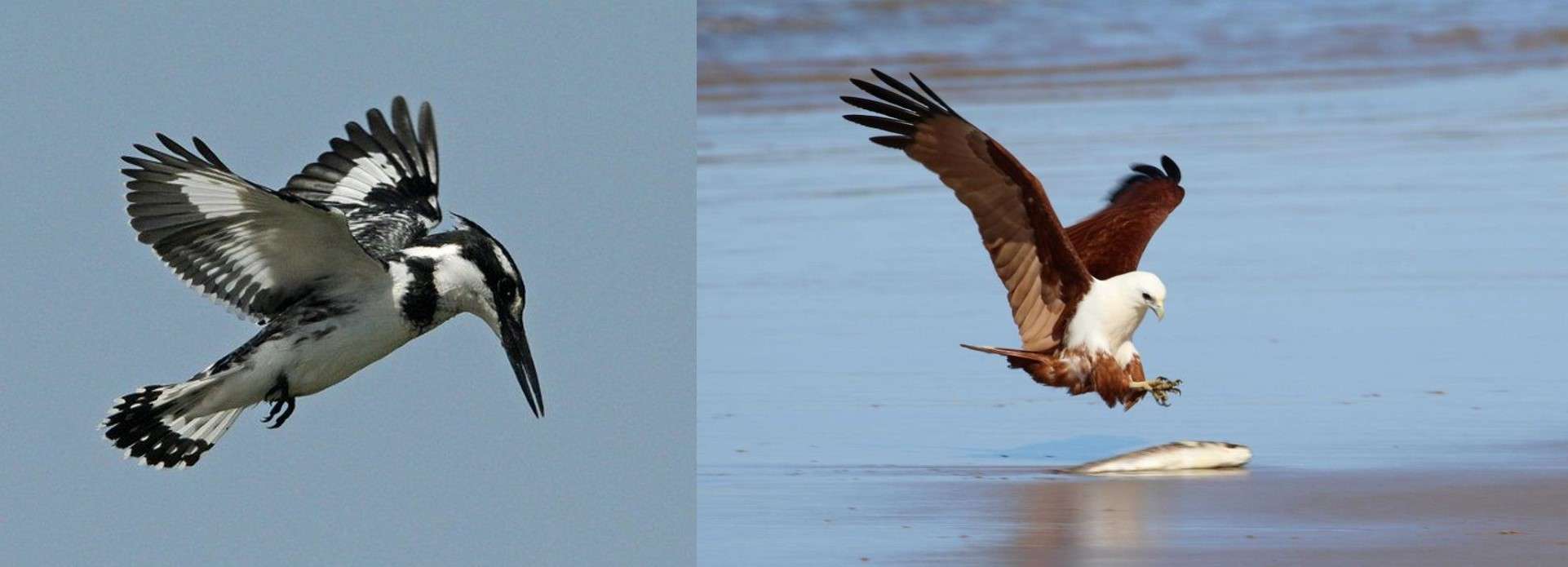Lesser Pied Kingfisher and Brahminy Kite overcoming Refraction | By Dr. Raza H Tehsin
I have closely and keenly observed more than 300 attacks by Lesser Pied Kingfishers (Ceryle rudis) to catch fish around Udaipur in Rajasthan, India. The kingfisher hovers over the water after locating the fish, which are playing almost at the surface.
To overcome refraction it hovers perpendicularly above, so that it can pinpoint the target. It drops on the target using gravity. The acceleration due to gravity is the speed attained by the attacker. Whenever it finds that water is shallow and it may hit the bottom, it reduces its height so that the velocity is less and it doesn’t hit the bottom.
Once near Udaisagar Lake’s overflow gates in Udaipur, in a pool of water fish were playing near a submerged boulder. Periodically, the kingfisher flew over the boulder and again settled down. Once it spotted a fish about two meters away from the boulder. It hovered over the fish and dived down to catch it. How they gauge the depth of the water is a mystery.
All the fish caught by kingfishers, during my observations, were having laterally placed eyes. These fish have wide vision due to this, but there is a range just above the head where the fish can’t see. The kingfisher makes use of this dark spot of the fish vertically above its head and attacks it likewise.
Near our house in Panchwati, Udaipur, there is a nullah which carries the excess water of all the three lakes of Udaipur during the rainy season. After the rainy season, the nullah retains some pools of water that harbour a variety of fishes. There is an electric wire across the nullah. Over this wire a kingfisher used to perch. Whenever there was a fish right below its perching position, it dropped down and caught it.
Fortunately, I took three videos of its diving attack. It enters the water with its velocity and weight. When I looked at the videos in slow motion, I found that in all the three videos when it just emerged out of the water, its tail and beak were almost at an angle of 7 degrees with the surface of the water.
I have observed Brahmani Kites (Haliastur indus) at Fatehsagar Lake of Udaipur catching fish 37 times. The kite circles in the sky and locates its quarry, pinpointing it. Then it comes down and glides over the surface of the water. Whenever it is near its quarry, it stretches its talons far ahead so that when its eyes are vertically above the target, the talons are ready to catch the fish. The refraction is overcome due to vertically spotting the target.
UT has added this video from BBC to accentuate the above article..
First published in the Cheetal, Journal of Wildlife Preservation Society of India
To join us on Facebook Click Here and Subscribe to UdaipurTimes Broadcast channels on GoogleNews | Telegram | Signal



